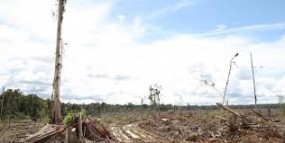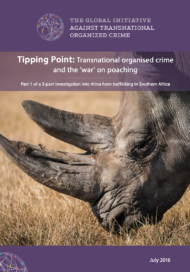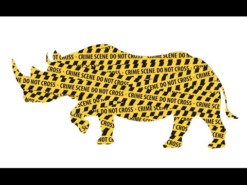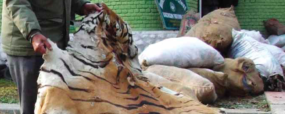Posted on 17 Jul 2013
IFAW’S 2008 REPORT, was one of the first publications of its kind to assert that the illicit trade in wildlife is not only a serious global environmental crime with profoundly negative impacts for endangered species protection, ecosystem stability, and biodiversity conservation, but it is also a real and increasing threat to national and global security. Since 2008, the problem has only worsened, and the world community has taken notice.
On May 1, 2013, the United Nations Commission on Crime Prevention and Criminal Justice agreed to a resolution calling on the nations of the world to “recognize wildlife and forest crimes as a serious form of organized crime and strengthen penalties against criminal syndicates and networks profiting from such illegal trade.”
This updated report seeks to further enhance our understanding of the global security implications of illegal wildlife
trade and highlight the known and potential connections between poaching and illegal wildlife trade and organized criminal
actors and organizations operating at a local, national, and global scale. The report makes the case for greatly increased attention and resources needed to fully understand the pathways of the illegal wildlife trade and connections to other illicit activities–drugs and arms trafficking, corruption and fraud, and, ominously, militancy and terrorism–all of which severely affect
not only the security and development of the local communities where wildlife resources are depleted, but also the security
of the nations and regions in which those communities are located and of the world community as a whole.
No longer a problem that is localized to parts of the world where many lack access to basic resources, illegal trade in
wildlife has grown to become a massive global industry. Various organizations and reports estimate that the trade is worth
at least US$19 billion per year and rank illegal wildlife trade, including timber and fisheries, as the fourth largest global illegal activity after narcotics, counterfeiting, and human trafficking and ahead of oil, art, gold, human organs, small arms, and diamonds.
Traffickers have a large variety of commodities to exploit depending on their resources, motives, and location in
the world, including big cat pelts, rhinoceros horns, elephant ivory, bushmeat, pangolin scales, shahtoosh shawls, tortoise
shells, bear gall bladders, shark fins, and caviar. The supply chain from animal source population to consumer is complex,
feeding a demand that covers a broad range of uses, such as culinary delicacies, traditional Asian medicines, pets, decorations and trinkets, hunting trophies, clothing, leather products, jewelry, and traditional crafts.
The trade proliferates easily, thanks to a parallel legal trade in wildlife (estimated at over US$300 billion per year), the expansion of the Internet as a global marketplace, confusing wildlife trade laws, lack of enforcement and basic governance structures, and fast-developing economic markets. Wildlife crime also does not receive the attention it merits from local,
national, and international law enforcement and security agencies or political bodies.
Photo by Gautam Arora on Unsplash



